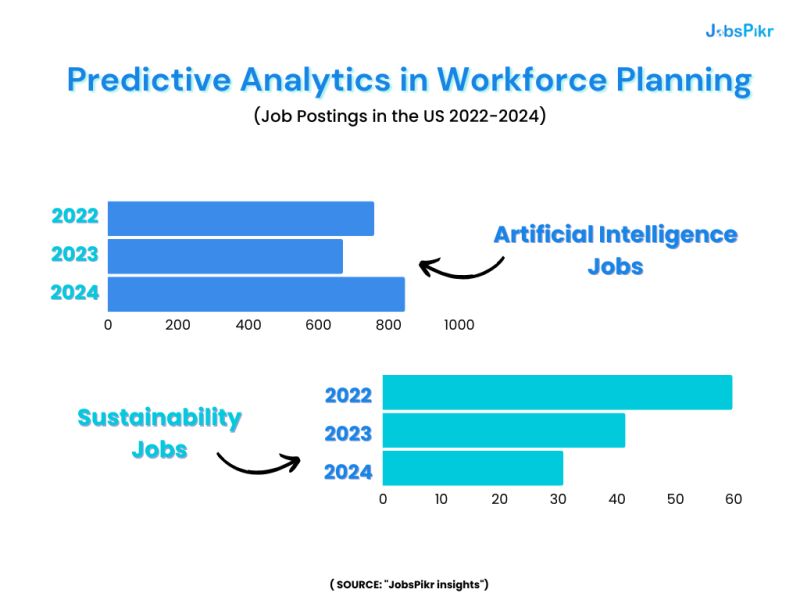In today’s rapidly evolving business landscape, staying ahead of talent needs requires more than reactive hiring practices. The advent of predictive analytics in workforce planning has empowered organizations to move from hindsight to foresight, helping them align their recruitment strategies with future market trends. This approach is becoming particularly vital in high-demand fields such as Artificial Intelligence (AI) while also being useful in areas witnessing a downward trend, like sustainability roles.

The Role of Predictive Analytics in Workforce Planning
Predictive analytics involves using historical data, statistical algorithms, and machine learning techniques to identify the likelihood of future outcomes based on past trends. In the context of workforce planning, this means analyzing patterns in job postings, skills demand, and labor market changes to predict where talent shortages or surpluses may occur. Organizations that effectively utilize predictive analytics can:
- Anticipate hiring needs ahead of time.
- Adjust recruitment strategies based on changing trends.
- Optimize resource allocation for training and development.
AI Job Market Insights: A Growing Demand
Data from JobsPikr reveals a striking growth in AI-related job postings in the US:
- 847K job postings in the first half of 2024
- Compared to 670K during the same period in 2023
- And 759K in 2022
This steady rise in AI job postings highlights a significant trend: AI talent is in high demand, and businesses that fail to align their recruitment strategies with this growth risk being left behind. Companies should now focus on:
- Building robust AI talent pipelines to meet the surge in demand.
- Investing in reskilling and upskilling initiatives for their current workforce to adapt to AI-driven roles.
- Leveraging predictive models to stay ahead of AI hiring competition.
Sustainability Job Market: A Downward Shift
On the flip side, sustainability-related jobs have seen a consistent decline:
- 30.9K job postings in the first half of 2024
- Down from 41.5K in 2023
- And 59.8K in 2022
This drop in sustainability roles could indicate a shift in priorities or a slowdown in certain sectors. Organizations focusing on sustainability must now rethink their workforce strategies. While the demand for such roles has decreased, companies can use predictive analytics to:
- Adjust their recruitment efforts in response to declining demand.
- Redirect investments towards emerging fields where future growth is anticipated.
- Explore cross-functional roles that combine sustainability expertise with other in-demand skills like AI or data science.
The Strategic Value of Predictive Workforce Planning
For HR leaders and talent acquisition professionals, predictive analytics offers a strategic advantage in workforce planning by providing actionable insights into:
- Emerging skill gaps and future hiring needs.
- Geographic trends for talent availability.
- The optimal timing to ramp up or scale back recruitment efforts.
By analyzing patterns in job market data, companies can make informed decisions that align with broader business goals and ensure they are equipped with the right talent at the right time.
Conclusion: Shaping the Future of Workforce Planning
The integration of predictive analytics into workforce planning is no longer a luxury—it is a necessity. Whether responding to the growing demand for AI talent or adjusting to the decline in sustainability roles, organizations that leverage data insights will be better positioned to thrive in an unpredictable job market.JobsPikr provides the real-time labor market data companies need to make these critical workforce decisions. Start planning for tomorrow, today.


